Capsule carrying stranded astronauts returns home without them
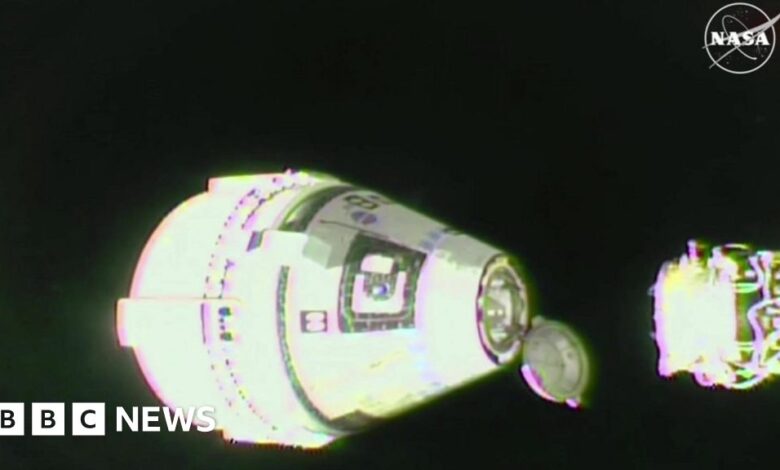
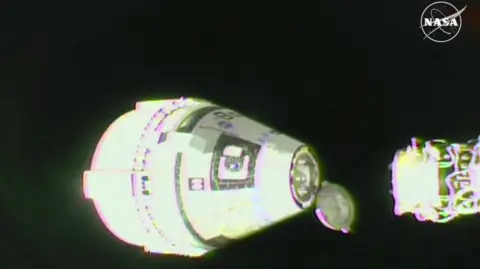 National Aeronautics and Space Administration (NASA)
National Aeronautics and Space Administration (NASA)Boeing’s Starliner spacecraft has begun its journey back to Earth – but the astronauts it was supposed to carry are still on the International Space Station.
The empty ship, which had been switched to automatic mode, separated from the orbiting laboratory.
The spacecraft suffered technical problems after launching with NASA astronauts Butch Wilmore and Suni Williams, and was deemed too dangerous to bring them home.
Instead, they will return on the SpaceX Crew Dragon, but not until February — extending their eight-day stay on the ISS to eight months.
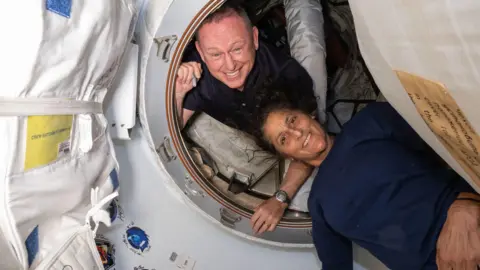 National Aeronautics and Space Administration (NASA)
National Aeronautics and Space Administration (NASA)Starliner’s return flight will last six hours and after entering Earth’s atmosphere, the craft will use parachutes to slow its descent to White Sands Spaceport in New Mexico on Saturday.
NASA previously said Butch and Suni were healthy and in regular contact with their families.
Steve Stich, director of NASA’s commercial crew program, said at a news conference that both astronauts are passionate about their work.
“Now they understand the importance of going ahead and… getting the car back safely.”
This is the first test flight of Boeing’s Starliner spacecraft with astronauts on board.
But it encountered problems soon after launching from Cape Canaveral in Florida on June 5.
The spacecraft suffered a helium leak, fuel was being pumped into the propulsion system, and some of the thrusters were not working properly.
Engineers at Boeing and NASA spent months trying to figure out these technical issues, but in late August the US space agency decided that Starliner was not safe enough to bring astronauts home.
Steve Stich admitted that there was “tension in the room” between Boeing and NASA when the decision was made, with Boeing arguing that its spacecraft could return safely with two astronauts on board.
“The NASA team, because of the uncertainty and the modeling, couldn’t be comfortable with that,” he said.
Plans to use rival company SpaceX have significantly delayed the astronauts’ return.
This extension is to allow SpaceX to launch its next spacecraft, which is scheduled to take off in late September.
The spacecraft was originally scheduled to carry four astronauts, but instead it will carry two, allowing Butch and Suni to join them on board for their return to Earth at the end of the trip, which is scheduled for February next year.
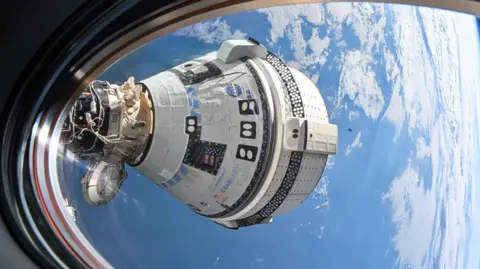 National Aeronautics and Space Administration (NASA)
National Aeronautics and Space Administration (NASA)Dana Weigel, director of the International Space Station, said the astronauts are adjusting well to their lengthy mission. Both have previously completed two long stays in space.
She said the couple are undertaking the necessary exercise programmes to stay healthy in the zero gravity environment.
And she added that they now had everything they needed for their unplanned eight-month trip.
“When we first sent them up, they borrowed a lot of the regular clothes we had on the plane and we have now swapped some of that out,” she said.
A resupply mission in July delivered “crew-specific priority items” that the couple had requested, she explained.
“So they actually have all the standard expeditionary gear at this point that any other crew member could choose from. And we have another cargo vehicle coming up, so we’ll send anything else they need for the second half of their mission on that flight.”
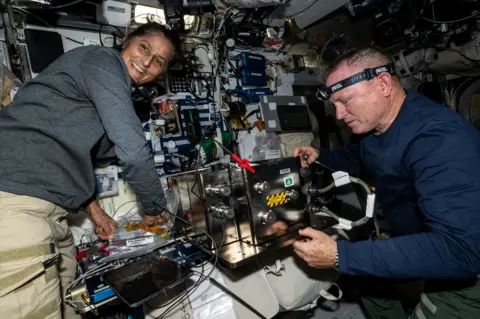 National Aeronautics and Space Administration (NASA)
National Aeronautics and Space Administration (NASA)The Starliner problems are certainly a blow to Boeing, which is suffering financial losses as it tries to restore its reputation after recent on-board incidents and two fatal crashes five years ago.
After so many problems, a safe landing would be the desired outcome for the company — and for NASA.
“Once we get the car back, we’ll spend a few months doing post-flight analysis,” said Steve Stich.
“There are groups starting to look at what we’re going to do to fully certify vehicles in the future.”
The US space agency has stressed its commitment to Boeing’s spacecraft – having two American companies send astronauts into space has been a key goal for NASA for some time.
When its space shuttle fleet retired in 2011, the United States spent a decade relying solely on Russia’s Soyuz spacecraft to transport crew and cargo — a situation that NASA admits is not ideal.
So in 2014, Boeing and SpaceX were awarded contracts to provide commercial space flights for NASA astronauts – Boeing’s contract was worth $4.2 billion while SpaceX received $2.6 billion.
SpaceX has so far flown nine manned flights into space for NASA, as well as a few commercial missions, but this is Boeing’s first attempt at a manned mission.
Boeing’s Starliner spacecraft has been delayed for years due to glitches in the spacecraft’s development, and two previous unmanned flights in 2019 and 2022 also encountered technical problems.
But NASA administrator Bill Nelson said he was 100 percent certain the spacecraft would be able to fly with a crew again.





